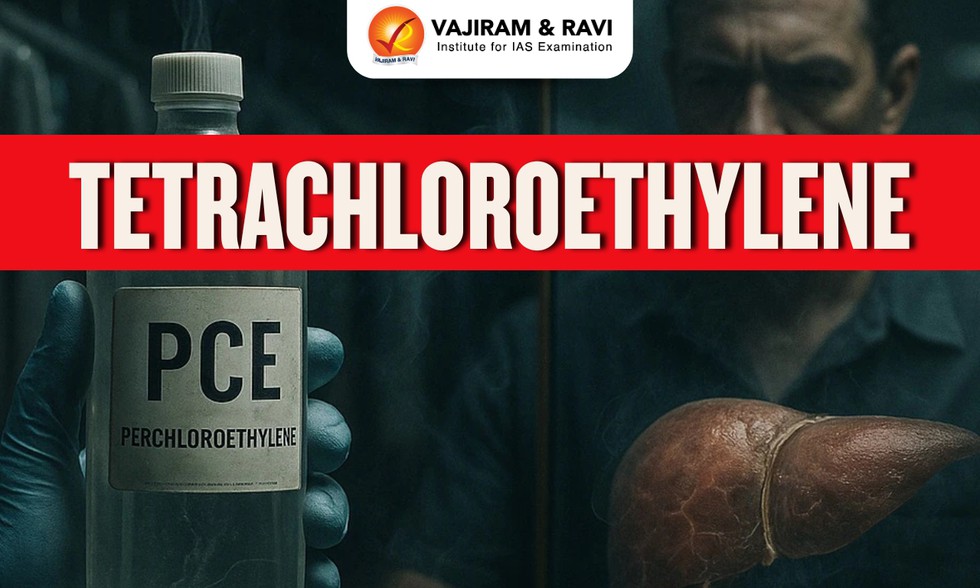About Tetrachloroethylene:
- It appears as a clear colorless volatile liquid having an ether-like odor.
- It is noncombustible and insoluble in water.
- Other names for tetrachloroethylene include perchloroethylene, PCE, perc, tetrachloroethene, and perchlor
- How does it enter the environment?
- It breaks down very slowly in the air and so it can be transported long distances in the air.
- It evaporates quickly from water into air. It is generally slow to break down in water.
- It is generally slow to break down in soil.
- It can also seep into soil and groundwater through factory waste or improper disposal, making drinking water another potential source of exposure.
- Health Impacts: Exposure to very high concentrations of tetrachloroethylene can cause dizziness headaches, sleepiness, incoordination confusion, nausea, unconsciousness, and even death.
- Applications of Tetrachloroethylene
- It is used to remove grease in industrial and household settings.
- It is widely used for dry cleaning of fabrics
- It is also used to make other chemicals and is used in some consumer products.
